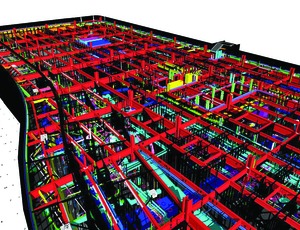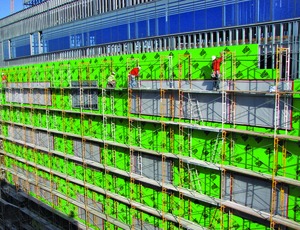For Anaheim-based design-assist specialty contractor KHS&S, achieving the benefits of integrated project delivery requires technology to give design and construction teams access to project data integrated across the software used by members of the team in real time, all the time.


KHS&S's answer is Scenario VPD, a virtual project delivery collaboration software and system. KHS&S partnered with Scenario, a software developer, in 2008 to develop a virtual project delivery system. It set the project up as a separate entity within the company a year ago. The resulting tool is a Web-based project data management system with plug-ins to integrate data from three Autodesk products (AutoCAD 3D, Revit and Navisworks) into a single building information modeling dataset accessible on the Web. The goal is to reduce clashes and errors early, while projects are still at the virtual stage.
KHS&S's product links the data via a tab-accessible interface from each of the three Autodesk products. The interface lets design-build team members access live project documents and data, manage three-dimensional models at the object level, identify clashes, assign and track changes, maintain the progress record and track the complete history of projects throughout their life cycles.
"Incorrect design costs owners a huge amount of money—and a lot more money the further along it is discovered," says Paolo Hilario, Scenario's director of product development. "We saw that being able to discover problems early, effectively communicating them to others and addressing them quickly can save millions of dollars on a project."
"The system has a two-part function," says Scenario's director of marketing, Bruce Holleran. "First, we have a dashboard for the user interface; users interact through this portal. Second, we have created a system that ties in popular AEC software by having an integrated plug-in for each of those. The information is pulled into the database, where users can make sense of it. Our clients use their various systems for different means and methods because they're used to them. With Scenario, they're able to transfer that same knowledge to our workflow system."
Scenario hosts the data, although an enterprise-level option allows clients to self-host if they prefer. The database can be stored both locally and in the cloud.
Neither Holleran nor Hilario would say how many users they have, but Roland Soohoo, general manager, says the company's "sweet spot" is large, complex construction, such as health-care and educational projects.
Two Scenario clients are Tilden-Coil Constructors, Riverside, and Hensel Phelps, based in Greeley, Colo. Thai Nguyen, Hensel Phelps corporate virtual design and construction manager, says the company used Scenario on a project in Barstow with "impressive" results. "It was a very effective tool for tracking model changes," Nguyen says. "You felt like everyone was in the room. As soon as somebody moved a pipe, you knew it. It really helped remedy the situation where ... a lot of people worked off site. You could coordinate in real time."
Jarrod Baumann, Tilden-Coil BIM manager, says his firm is testing Scenario and, so far, likes what it sees.
"I think it's where construction management software needs to be focused, as far as resolving all the documentation processes around the BIM model," Baumann says. "Scenario starts from the model as the core of the coordination process. It's very strong in the areas of documentation flow, keeping current construction documents right at the user's fingertips. It's completely attached to the BIM model, so all the processes you put into it, such as RFI and change orders, can be tied directly to elements in the model. You have that history and information all the way through, along with the paperwork."


Post a comment to this article
Report Abusive Comment